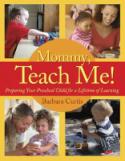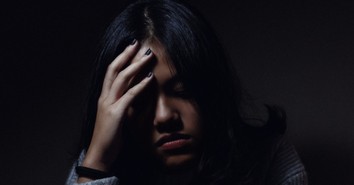15 Ways to Observe Holy Week with Your Family

Editor's Note: This is Part II in a series on celebrating Lent and Easter. To read Part I, click here.
Traditions -- especially those children can see, hear, feel, smell and taste -- provide vivid impressions on which parents can build year after year. There are many which will enrich your own family’s celebration of what might be more accurately called Resurrection Day. Choose a few from this collection, share their meaning in whatever words your children will understand, and keep the ones you like as part of your family’s Easter heritage.
Holy Week
11) Resurrection Eggs (TM): An egg carton filled with a dozen plastic eggs, each containing a symbol of the Holy Week. Accompanied by twelve brief child-friendly lessons. Make them yourself with directions from https://www.rainbowcastle.org/resurrectioneggs.html or order from FamilyLife Ministries.
12) Palm Sunday: If your church doesn’t make much of Palm Sunday, you might consider just once attending one that does. For an in-home celebration, read Matthew 2:1-11 together. If you have a large family or a few friends, you can put together costumes and act out Jesus’ arrival in Jerusalem.
13) Seeds: Seeds offer a clear message to children of the power of new life. Rest eggshell halves filled with soil in egg carton. Plant a marigold, petunia, or grapefruit seed in each (or even grass seed for fastest results). Place in sunny window.
14) Art Museums: The Passion of Christ is the most-portrayed subject of Western artists. If you live in a metropolitan area, a visit to your local art museum may give your family much to ponder.
15) Housecleaning: Wednesday of Holy Week has been a traditional day in many countries for housecleaning -- from the Jewish custom of cleaning before Passover.
16) Passover: Each year more Christians are drawn to celebrate Passover, the feast commemorating the departure of the Israelites from slavery (Exodus 12). Jesus had come to Jerusalem to celebrate and was actually crucified on Passover Day. He is the fulfillment of this tradition, as our own Passover Lamb. For more information on connecting the Old and New Testaments in this way, visit Introduction to a Christian Seder: Recovering Passover for Christians.
17) Foot Washing: This Maundy Thursday event speaks volumes about Jesus’s desire for us to serve. Read John 13. Wrap a towel around your waist, as Jesus did, and wash your children’s feet. Your lives might never be the same.
Good Friday
18) Three Hours: Observe Jesus’ crucifixion by reading the Biblical account together. Sing old hymns of the Crucifixion and the Cross: “Were You There When They Crucified My Lord?” “The Old Rugged Cross,” “When I Survey the Wondrous Cross.” Most Catholic churches offer Stations of the Cross, fourteen plaques circling the interior walls which depict the final hours of Jesus’ life. You may want to visit and contemplate these, one by one.
19) Hot Cross Buns: Traditional Good Friday fare for the family to make and eat together.
Saturday of Holy Week
20) The Passion: Watch Mel Gibson’s portrayal of Jesus’s last hours with older children (warning: graphic but realistic violence). If your children are younger, If your children are younger, watch the Jesus Film Project's beautifully-crafted evangelical movie, scripted only with words from the Gospel of Luke.
Easter Sunday
21) Easter Greeting: Greet each other with “Alleluia, the Lord is risen!” and answer “He is risen indeed!”
22) Sunrise Service: Attend one offered by a church, or climb a hill with your family, worship together, and share a picnic breakfast.
23) Special music: Listen together to Sandi Patti’s moving “Was it a Morning Like This?” Listen again. Discuss how it must have felt to see our risen Lord. Was anyone who saw him ever the same? Jesus said those who believe without having seen are blessed (John 20:29).
24) New clothes: New converts were traditionally baptized at Easter, wearing new white garments to symbolize their new life. If your family has new Easter outfits, share with your children where this tradition came from.
Somewhere in the Easter celebration, you may be coloring eggs and visiting relatives. Eggs then can become subtle way of sharing the Good News of Jesus Christ. Like seeds, eggs are very much a symbol of new life. Traditionally they were also a symbol of Easter joy because they were a forbidden item during Lent. Nowadays, dyed to take to grandmother’s for an annual Easter egg hunt (as our family does each year) they can bear all manner of joyful messages.
Share with nonbelieving relatives and friends what your family is doing for Easter this year -- maybe next year they’ll join in.
Whatever traditions you keep, remember that for believers Easter is a celebration that really never ends.
Make It Real for Little Ones
Young children are not abstract thinkers. To learn, they need to see. Experiences like growing seeds or bulbs give them a concrete image, providing a bridge into the abstract concept of new life.
Easter Diorama
Books with lots of pictures are a must for children to understand Jesus’ death and Resurrection. For preschoolers, go easy on the torturous events leading to the Crucifixion as they could be too intense and upsetting. Concentrate on the tomb -- finding it empty holds a lot of drama for children.
For even more excitement, make the story three-dimensional.
Using clay or papier mache, construct a tomb and a stone. Create a scene, as simple or elaborate as you wish, of Jesus’ burial site. Make or look through the toybox for plastic figures to represent Jesus and the guards. Wrap Jesus in a shroud (gauze from the medicine cabinet is perfect), place him in the tomb on Friday. Roll the stone in front of the opening of the tomb, using appropriate vocalizations to show how heavy it is. Now station the guards in front. No one is to touch the stone, although with the children’s help, the guards may march back and forth to stretch their legs.
On Easter morning the children should find that during the night the stone was rolled away. The guards are lying outside the tomb, the gauzy shroud is inside, but Jesus is gone!
Read whichever Biblical account fits your children’s ages or attention spans -- some gospels have more information than others. Then “discover” the Jesus figure nearby. Now the words have meaning: “He is risen!” “He is risen indeed!”
Barbara Curtis has 12 children - including three adopted sons with Down syndrome - and 10 grandchildren so far. She is also an award-winning author with nine books and 800+ articles in print publications including Focus on the Family, Guideposts, Christian Parenting Today, and The Washington Times.
Barbara is a popular speaker at MOPS and women's events, as well as writers' conferences. Online you can find her at MommyLife and Mommy, Teach Me!.
Originally published March 21, 2012.








